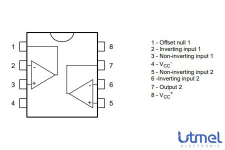Untro
Member
Hey gang, I think I need some help with this run of LGSM I just finished. After a long haitus of the hobby, I finished three I had started months ago. Two worked, one with a lot of fanaglling, but the third...
The third had one pot that had lugs, and i forgot to heatshrink those lugs. When I tested this pedal (outside of the enclosure), it created a screaming self oscillation, the LEDs in the circuit glowed bright green, and then it stopped making any noise at all except a soft rhythmic 'chck chck chck' kinda sound. I wonder if the lugs on the wired pot shorted against the board in a critical way. It still passes dry signal.


I really want to learn how to fish when it comes to trouble shooting. It had been awhile since I had made a pedal and I forgot some of the finer points of offboard wiring, but I've gone over the parts again and again and everything looks correct, the points on the pcb look fine. I know I'll need another tlo72 and diodes in there, but want to make sure I dont just short another.
I don't know how to trace or measure signal or how to compare what's what, I've tried to learn but it just eludes me. Any outside perspective/advise on this one, or leads to resources that worked for you when it comes to learning troubleshooting, I'd very much appreciate it.
The third had one pot that had lugs, and i forgot to heatshrink those lugs. When I tested this pedal (outside of the enclosure), it created a screaming self oscillation, the LEDs in the circuit glowed bright green, and then it stopped making any noise at all except a soft rhythmic 'chck chck chck' kinda sound. I wonder if the lugs on the wired pot shorted against the board in a critical way. It still passes dry signal.


I really want to learn how to fish when it comes to trouble shooting. It had been awhile since I had made a pedal and I forgot some of the finer points of offboard wiring, but I've gone over the parts again and again and everything looks correct, the points on the pcb look fine. I know I'll need another tlo72 and diodes in there, but want to make sure I dont just short another.
I don't know how to trace or measure signal or how to compare what's what, I've tried to learn but it just eludes me. Any outside perspective/advise on this one, or leads to resources that worked for you when it comes to learning troubleshooting, I'd very much appreciate it.
Last edited:


